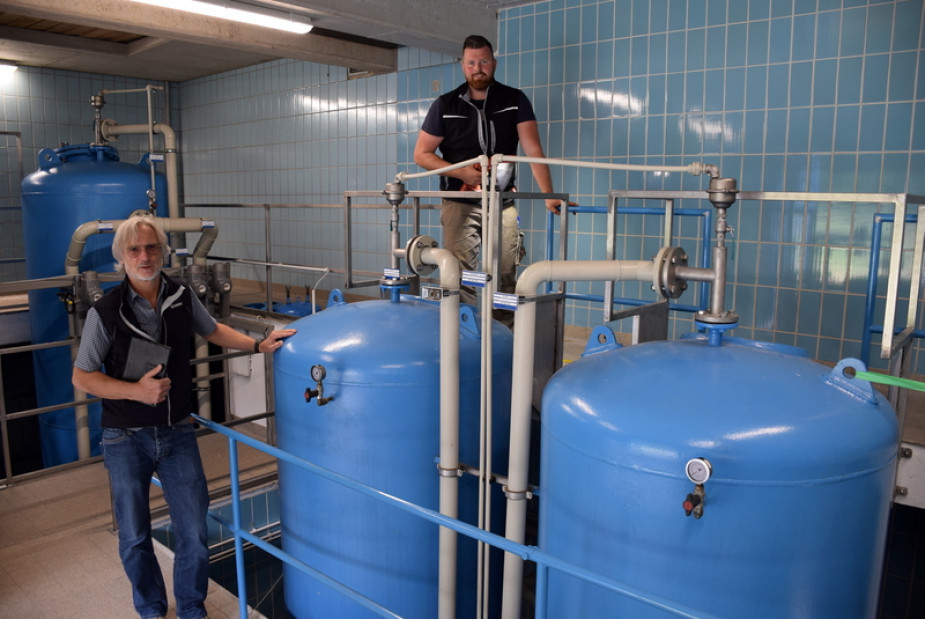Removing lead from drinking water using GEH® (Granular Ferric Hydroxide): Successful use in Mechernich

"Lead in drinking water" – This age-long issue is typically associated with old lead piping in residential installations and does not pose a problem today. The installation of lead pipes has been prohibited since as far back as the 1970s, while recent decades have seen other materials put to use when refurbishing old buildings. The limit value for lead in drinking water has been progressively lowered, with today's limit of 10 µg/L having been introduced in 2013.
Interestingly, lead can also be naturally found in ground water. This occurs when the aquifer primarily comprises lead-bearing rock layers where the pH value is too low to dissolve the lead-bearing minerals. For those water suppliers reliant on the use of lead-laden raw water to produce drinking water, removing lead content is a challenging prospect.
A chemical deacidification process is typically used to remove lead from raw water: This involves passing the water through granulated calcium carbonate or a dolomite filter material and binding the free carbonic acid. At higher pH values, the dissolved lead precipitates as insoluble lead hydroxide or lead carbonate, and is filtered off. Despite this process having proved its worth in the past, its limitations come to light when very low lead concentrations need to be achieved and the pH value cannot be raised too high. In these situations, the best option is to specifically remove the lead using a ferric hydroxide adsorbent.
Since July 2021, our GEH®102 Granular Ferric Hydroxide has been used under real conditions for exactly this purpose at a waterworks in the town of Mechernich (North Eifel). In the course of a so-called extended efficacy test (erweiterte Wirksamkeitsprüfung (EWP)) conducted under the leadership of the German Environment Agency (Umweltbundesamt), the effective removal of lead was proven and evaluated by an expert.
After six months of operation, it is now possible to draw an initial conclusion. The capacity of our GEH® Granular Ferric Hydroxide has been successfully corroborated. It achieved an outstanding lead retention value below the analytical limit of detection of <1 µg/L. At the same time, it should be emphasised that the GEH® adsorber is fed in together with the raw water during this initial phase (100 µg/L lead; pH 5.7) in order to test its efficacy under the most unfavourable conditions imaginable. During the second phase, scheduled to occur in the summer of 2022, its actual operation as a "policing filter" after the deacidification phase will be tested.
To learn more, please read the press releases issued by the town of Mechernich:
https://www.mechernich.de/rathaus-politik/presse/ (german)
Image sources: Kirsten Röder/pp/Agentur ProfiPress
